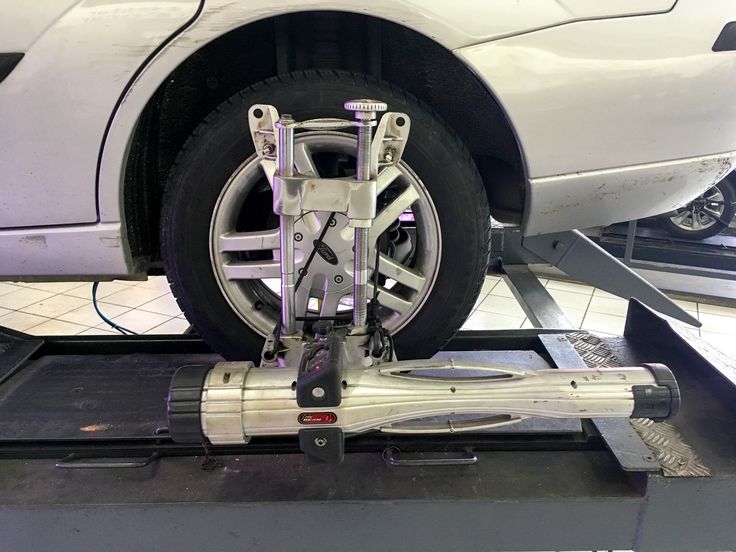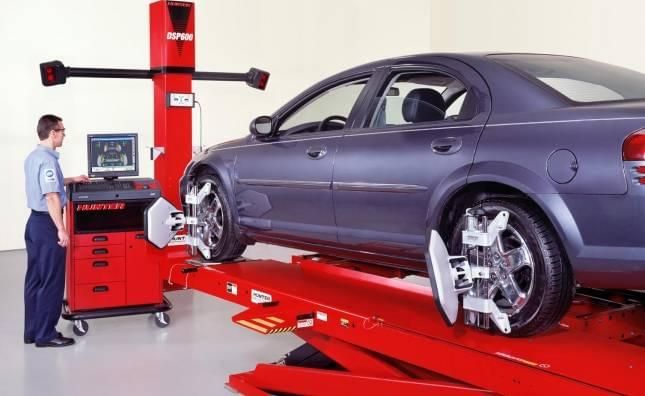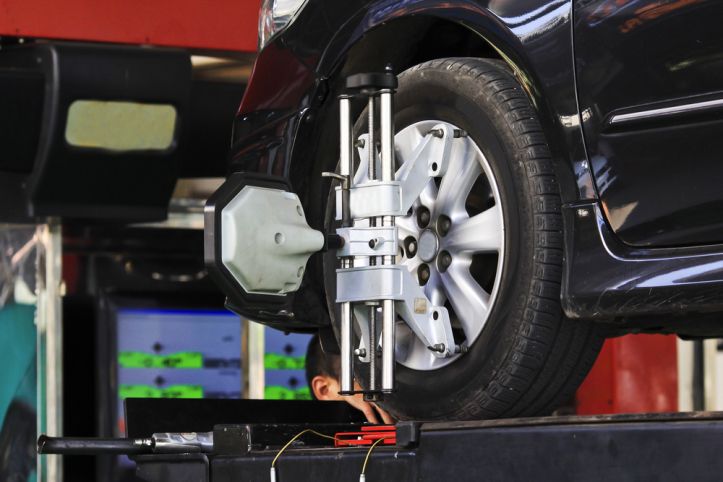Every time you go buy car tires, some mechanics will advise you that you should need an alignment after replacing them. As you already know, alignment is a gateway to last the lifespan of your tires and give you safety in every driving. A quick question: Do I need an alignment with new tires? This is a comment question we received from many drivers after getting new tires. Read on, we have your answer right here!
Contents
Wheel Alignment: Why Is It So Important?
What is wheel alignment?
For people who still aren’t familiar with the term “Wheel alignment”, we will briefly discuss What is alignment? Wheels are the parts that are in direct contact with the road surface and play an important role in the performance of a car. Besides, it also has to support the entire weight of the vehicle. Therefore, in actual operating conditions, there are many causes that can affect the wheel angle, causing it to deviate from the original setting.
To handle this problem, the wheel alignment method is a lifesaver. A wheel alignment is a mechanical technique performed to adjust the setting angle of the front wheel by direct impact on the vehicle’s suspension system, helping to prolong the life of tires and ensure accuracy when steering the wheel.

Benefits of an alignment
Wheel alignment has proved to be a great method to enhance the performance and longevity of your vehicle’s tires. An alignment is critical to optimizing tread wear and saving your fuel. Regular wheel alignments are wise investments to help you save money in the long run. If your tires are scrubbing and in either direction or creating the drag with the car, we’re gone and have to fight that resistance that pushes the car down the road again. So having an alignment and proper specification, you will have the best fuel economy possible. Wheel alignment should be considered routine preventative maintenance.
Wheel alignment is very important during car maintenance but wheel alignment for new tires: is it really necessary?
>> Related post: The Warning Signs Of Bad Wheel Alignment
Do I Need An Alignment With New Tires?
Vehicle owners often take the car to check and align the wheel when detecting some of the following abnormal signs:
- Uneven tire wear
- The steering wheel is not standard and often deviates when traveling in a straight line
- The steering wheel shakes and returns slowly
- The car crashed into a pothole, an elephant hole, or hit a high curb
- The camber angle and caster angle are misaligned
Do you need an alignment when you get new tires?
But your tires are new, so do new tires need alignment? Wheel alignment isn’t necessary when you’re getting a new tire, but it’s a really good idea, if not a very good one. Alignment helps to ensure that all four tires are correctly placed together. Many drivers agreed that we should need an alignment for the old or used tires after running a certain distance. And they assume that there’s no need to spend more money on this service. We do not completely deny the idea. However, so that your new tires can have the best lifespan and work efficiently and consistently. We recommend you should have an alignment after installing new tires.
If you don’t properly align with your new tires, chances are you’ll have a rough ride. There have been cases where a lack of alignment causes uneven tire wear that reduces the lifespan of the tire. At that time, buying a cheap tire to save money will not be a smart choice as the frequency of replacing the tires will increase.
Wheel alignment and replacing a new tire: Which one should we do first?
A problem is raised: Should we need a wheel alignment before or after replacing a new tire? Experts recommend that changing the ride height of your car is the only cause that makes your tires wear out. With the modern suspension design, it’s unlikely to have an impact on an alignment. So wheel alignment and installing new tires: Which one should come first? Our answer: it doesn’t really matter to decide whether you should align tires first or change the new tires. And changing the car’s height from the old tire to the new tire has no effect on the suspension at all, and switching to a different size tire has no effect. It is only a problem when you adjust the suspension to replace the ride height, at that time, the alignment will change.
What Happens If You Don’t Get An Alignment?
One of the most often overlooked aspects of your car is wheel alignment. Some drivers see tire alignment as an extra step in the maintenance process, others don’t feel the need to do it because they don’t see any short-term problems. And this will really affect the car in the long run. Delaying on-time tire alignment can damage the suspension, and tires, and even put your and your passengers’ lives in danger. When your vehicle is out of alignment, three basic problems may occur:
- Irregular tire wear
Take a close look at the grooves on the tires. When your tire is properly aligned, you will notice the surface wears out in consistent positions. Good alignment can keep your tires last for longer. When tires wear out at the edges or at their weakest points, they can break and cause severe damage to wheel components and wheel hubs. And it’s the consequence of misalignment.
- Handing problem
Improperly aligning your wheel is the most common problem that leads to poor handling. Over time, it’s natural for the wheels to drift apart, and eventually, you’ll really notice it while driving. You should check the alignment of your wheels periodically and make professional adjustments if necessary.
- A crooked steering wheel
When you are driving on a straight road, you feel your car tilting to one side. The cause of this problem is due to a crooked steering wheel. Why does it happen? When the toe angle of your tires is inward or outward and not as straight as it should be. This is the reason to explain this situation. A bent steering wheel will most likely cause your vehicle to shift left or right, depending on the level of misalignment.

How Often Should You Do A Wheel Alignment?
Keeping the view of the wheels in line with the road when you go over the bumps is every critical function of an alignment. So the answer to how often you should get a wheel alignment. As a general rule, it’s a good idea to have your alignment checked at least every two years and any adjustments that need to be made can be done at that time. However, according to the advice of tire experts, it is necessary to calibrate the steering wheel every 10,000 km or every 6-12 months to ensure safety when using as well as ensure the most uniform wheel wear when used. Sometimes if your car hit a pothole or anything detrimental happens to the suspension, you should have an alignment check.
>> Read more: How Much Does It Cost For A Wheel Alignment?
How Much Does It Cost For A Wheel Alignment?
The cost level needed to spend to align the wheel on the market today is about $50-$100 depending on the models. A front-end alignment usually costs about $65 -$100 (some brands, of course, are more). At that price, it should be a regular part of your car care regimen. To make an alignment even more economical, some car care facilities offer a lifetime alignment package of around $200.
Under normal circumstances, a wheel alignment will take an average of one hour, whether it’s a two-wheel-drive or four-wheel-drive vehicle. If there’s too much wear and tear damage or damage to the suspension system, steering bushing, or track rod…it’ll take a long time as some components have to be replaced.
Typically, if your vehicle is an all-wheel-drive model comprising an independent suspension, it will need a 4-wheel alignment. Service consists of a caster and front toe adjustment. For the rear wheels, they will receive a camber and toe adjustment.



